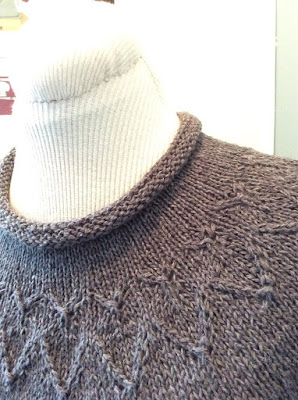why had I not tried one? well I did not have one. There are many gorgeous spindles available online, but of course, by the time one adds shipping and currency exchange they can get a little pricey....what if I find I don't like spinning this way.....would be a bit of a waste. So I decided to try making my own.
I gathered a few things from the hardware store and because I wanted a tapered shaft I used an old paintbrush instead of a dowel.
To make the support bowl, I picked up a Danish drawer pull that has a very nice concave form. I wanted the "bowl" to have a flat base so a couple of small wooden toy wheels completed the assembly.
I gave everything several coats of varnish with some sanding in between to give the spindle a lovely sheen and very smooth feel.
These may not spin as long as some of the professionally wood turned beauties, but they work quite well and are allowing me to learn how to spin supported.
I am really enjoying spinning this way as it is even more portable than a drop spindle. Rather than having my arm up and out as I need to with the drop spindle, I can spin seated with the bowl in my lap.....everything is close to the body.....meaning I can spin for longer periods of time and just about anywhere I like.




















































